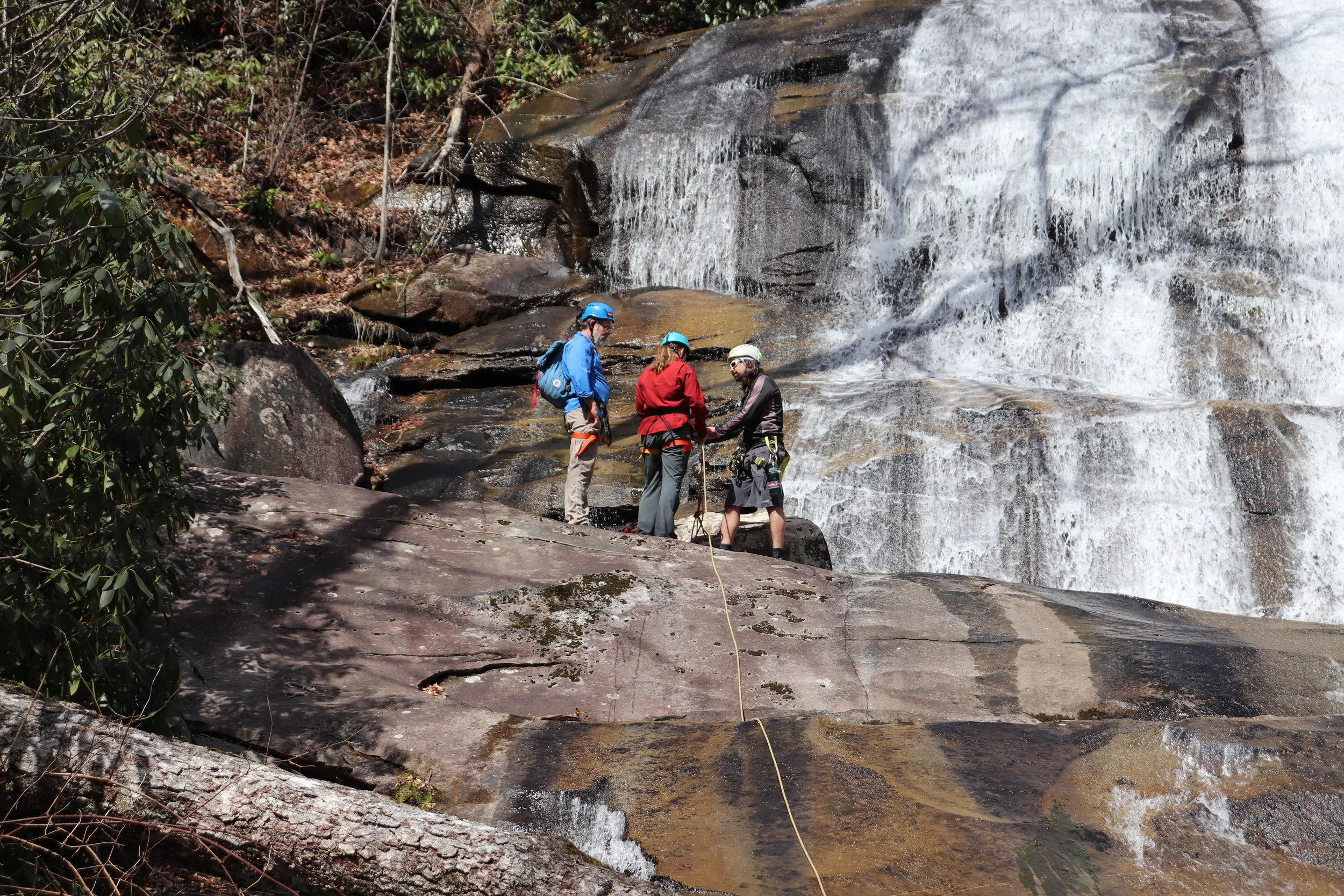My friend, Ellen asked me recently, “Would you be able to do a presentation for people in my neighborhood about hiking with grandkids?” That started my wheels turning. I not only hiked a lot with my own kids when they were young, but now I’ve got three grandkids with whom to share outdoor adventures with. I also spend my summers leading girls ages 6-16 on hikes through my work at Rockbrook Camp. As I’m sure many of you know, venturing out on the trail with kids in tow takes some extra consideration, patience, and courage! Hiking with kids can allow us to re-live the excitement and wonder of new discoveries.
More and more, people are beginning to accept and embrace the need for connection to nature and the outdoors. In 2005, Richard Louv published a groundbreaking book titled, Last Child in the Woods. In this book he coined the term, “Nature-Deficit Disorder.” This is not a medical diagnosis, but a way of describing the mental, physical, and spiritual cost of being disconnected from nature. Louv points out that over just a few decades kids are spending less time outdoors and more time in front of the screen of a TV, computer, or smartphone. Louv states, “Kids are aware of the global threats to the environment—but their physical contact, their intimacy with nature, is fading,” Louv writes. In 2011 he published The Nature Principle, basically a follow up book arguing that adults need a connection to nature just as much as kids. Connecting with nature, taking our prescription of Vitamin “N”, will heighten our senses, improve our health, enhance our creativity, provide opportunity to bond with others, and help us appreciate the natural world.
Technology and our busy modern lives isn’t the only thing causing a disconnect from the natural world. Another facet of this disconnect is cultural. Our society teaches us to be afraid of the outdoors. From the boogeyman to the big bad wolf, people and animals are dangerous. Pay attention when you hear or see depictions of the outdoors in the media, on the news, and in movies. In the recent blockbuster movie, “Bird Box,” there are deadly forces outdoors that cause people to commit suicide if they so much as cast their eyes upon them. The solution is to either stay indoors with the windows covered and doors locked, or take your chances outdoors fighting off evil wearing a blindfold. If we don’t offer kids positive stories about the outdoors and positive experiences in nature, we leave them to believe what they see and hear online, in the news and at the theater.
If you’re like me, you have experienced the benefits of getting outdoors or on the trail. It comes as a wave of calm, peacefulness, and serenity. Maybe you feel the stress of your day falling away and gain some much needed time for reflection. Nature puts our problems into perspective and allows us the opportunity to experience awe and wonder. Have you ever watched a child explore outdoors? They show us how to stop and appreciate the things we long ago started to take for granted. This brings me back to the original question. How can we take our kids or grandkids out and have an enjoyable, rewarding, and safe time in nature? Here are a few suggestions.
Check your expectations at the door. If you want to walk for exercise, do that some other time. If you’re hiking with kids, let them set the pace. If they want to spend ten minutes watching a bug, that’s what you do.
Select a kid-style destination-- a place with a creek to explore, boulders to climb, a lake you can skip rocks across.
Take the 10 essentials: navigation (map and compass), headlamp, sun protection, first-aid kit (for minor cuts, scrapes and blisters), knife, lighter, rain gear, extra food, extra water, extra layers for warmth.
Let them carry their own backpack. Put things in the pack that will help them explore and feel independent. (water, magnifying glass, snacks, butterfly net, and a whistle to blow if you happen to get separated)
Establish safety guidelines--closed-toe shoes, stay within sight, whistle to find me, if you can’t find me, stay put and whistle in three short bursts.
Have a lot of flexibility. If you only get 20 yards from the front door, that’s okay.
Set a pace that allows time to wander…so you can wonder.
Invite a friend. You can double the fun when you share your time outdoors with others.
Snacks: gold fish, carrot sticks, grape halves, granola bars, string cheese
Motivation—Save a special treat that they can only eat if they are walking, like super special “energy beans,” aka jelly beans.
Teach the principles of Leave No Trace
Teach map skills
Collect micro-trash and pack it out
Play games: scavenger hunt, songs, alphabet game, eye spy, look for blazes that mark the trail.
Have a change of clothes and shoes in the car. That way you can get dirty on the trail!
Have a plan if the child gets tired. Invest in a backpack carrier for toddlers, or a front carrier for infants.
If you have your own kid-tested trail tips, please share them in the comments below.







